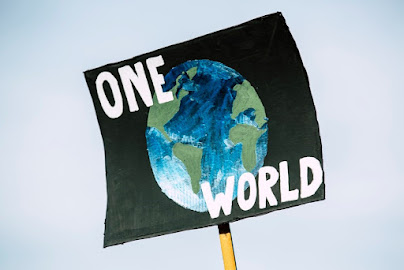THE ENERGY CRISIS AND PLANNING FOR THE FUTURE AT COP26 - Abhinav Goyal
The Paris Climate Summit in 2015 was a landmark event, while
the material impact might be debatable but the promises and hopes that were
sold in its aftermath were meant to change the future, save the world. While
unsurprisingly, some governments changed, forests continued to burn &
promises were forgotten, the recent news surrounding coal shortages and natural
gas crisis across Eurasia sounded like a bad joke, especially when a global conference
on climate change is just around the corner, talk about timing!
The event we are alluding to is the COP26 – the 26th Conference of the Parties to the UN Framework Convention on Climate Change. This conference is valuable because it is the most important global platform for talks on Climate Change among the world leaders after the 2015 Paris Summit. While the deal did not demand or declare austerity or cuts on spending, the signatories pledged their own Nationally Determined Contribution (NDC) strategies but the deal required them to meet again in 5 years to up their game and expand the scale and seriousness of those pledges for the years ahead, hence the COP26 in Glasgow, Scotland from 31st October 2021 (The original conference got postponed by a year due to covid-19). According to International Energy Agency (IEA), the current pledges give a 50% chance of keeping warming below 2.1°C and only 5% of keeping it under 1.5°C, the original target.
This brings us to the major events leading up to COP26 and the one that deserves some attention is the recent coal shortages and subsequent power crisis (or the fear of) in India and China. India’s state arose due to a confluence of multiple economic factors and started when the country went into lockdown again due to a massive second covid wave. Lockdowns and negligible demand drove industries to shut down which had an overarching effect on power demand across the country. Lower demand meant lower generation and hence power generation companies slowed down on sourcing coal, but it all circled back when demand sharply rose post-July. But this coincided with high international coal prices and low domestic coal production due to monsoons, hence this time supply was going to play catch up.
China’s case on the other hand is more relevant to the summit, primarily due to its contribution to global emissions as well as lofty targets of going carbon neutral by 2060. To battle its increasingly toxic air in major cities and to shed the tag of a fossil fuel-driven country, the 2nd largest economy went ahead with sweeping changes by focusing on an EV future, banning coal permits and mines, setting emission targets and fines, all the while maintaining low prices. But aggressive policymaking does not replace economics and market forces. As existing coal supplies went dry and demand remained strong, firms had no option but to manage supply and cut power.
This crisis in Asia with a similar one in Europe due to shortage of Natural Gas supplies provide a grim backdrop to a summit tasked with deciding course for the future. In reality, these are short-term hiccups, inevitable as countries uproot decades-old systems and replace them with fuels of the future. The question is not that Coal is irreplaceable but how the transition can be planned better and with the least impact on people and industry, but it's not always that simple is it.
While 2021 has been pretty eventful by all standards, let’s hope that our world leaders have no more (unpleasant) surprises for us!




Comments
Post a Comment